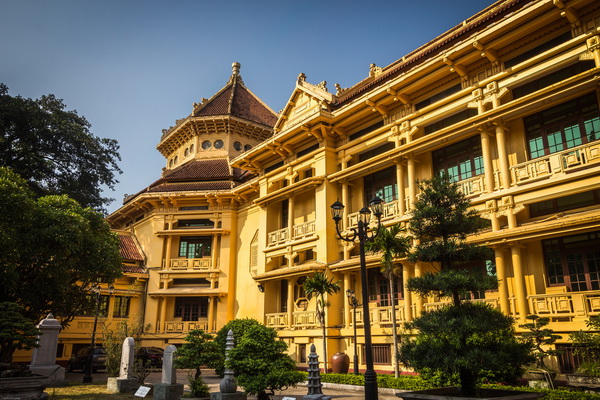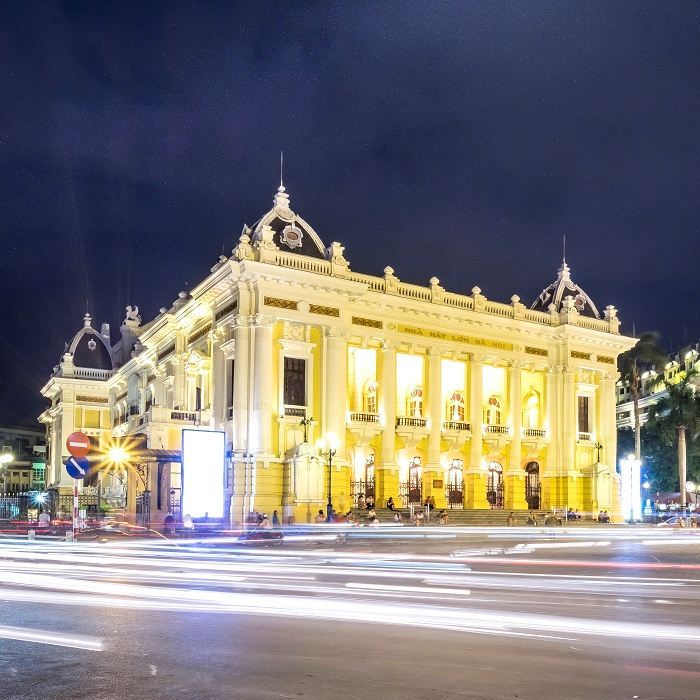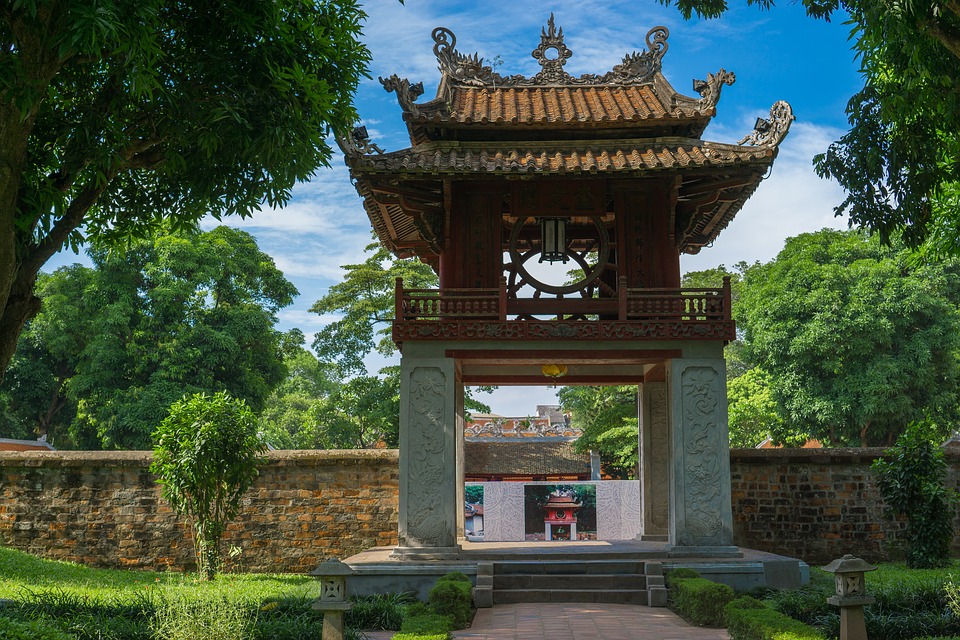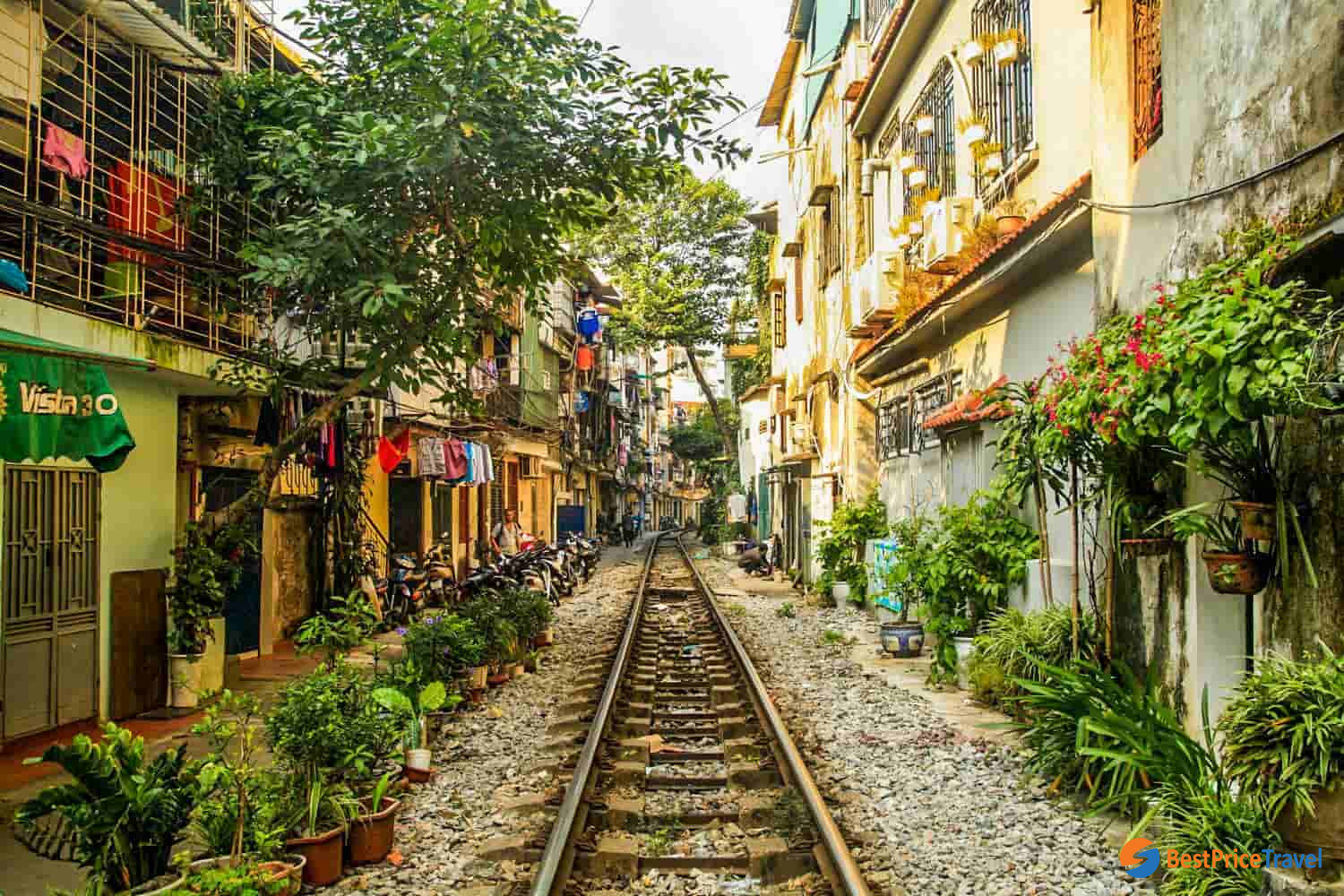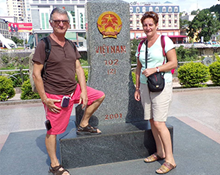- Home
- OUR ITINERARIES
- GUIDEBOOK
- VIETNAM HISTORY
- USEFUL INFORMATIONS
- BEFORE DEPARTURE
- VISIT HA LONG BAY BY SEAPLANE
- MOST BEAUTIFUL BEACHS IN VIETNAM
- GEOGRAPHY & CLIMATE IN VIETNAM
- VIETNAM CULTURE
- NIGHT IN HOMESTAY
- CRUISING IN VIETNAM
- ACCOMMODATION & ADVISES
- BEACH, SNORKELING & DIVING HOLIDAY
- TRAVEL WITH FAMILY
- GOLF
- DOMESTICS FLIGHTS
- OFF THE BEATEN TRACK TOUR
- SITES TO DISCOVER
- ABOUT US
- CUSTOMIZED TOUR
Hanoi, the thousand-year-old capital of the country
Hanoi is the capital of the Socialist Republic of Vietnam and also the former capital of most dynasties in Vietnam in the past. Thus, the history of Hanoi is closely linked to the vicissitudes of the history of Vietnam through the different periods. Currently, Hanoi and Ho Chi Minh City are the major cities in Vietnam.

Hanoi in Vietnam
Hanoi is located in the middle of the Red River Delta having very fertile land. So, the city quickly became the political, economic and cultural center since the beginning of Vietnam's history. In 1010, King Ly Cong Uan of the Ly Dynasty decided to build the new capital of Vietnam in Hanoi with the name of Thang Long. During the reign of different dynasties like: Ly, Tran, Le, Mac, Trinh… Thang Long was the center of culture, education and commerce of Vietnam. When the Tay Son dynasty came to power, the capital was transferred to Hue and Thang Long was named Hanoi in 1831 under King Minh Mang of the Nguyen. In 1902, Hanoi became the capital of the Indochinese Federation which adopted the Haussmann style to be considered the “Little Paris of the Orient” at the time. After the tumults of Vietnam's history caused by successive wars, Hanoi has been chosen as the capital of the Socialist Republic of Vietnam to this day.
Geography of Hanoi:
Hanoi sits in the middle of the Red River Delta. After the extension of the administrative boundary in August 2008, the city has an area of 3324.92 km2 and is located on both sides of the Red River, but mainly on the right bank. Thanks to the alluvium, the topography of three quarters of the city of Hanoi is flat. The mountainous regions are found in the suburban districts like: Soc Son, Ba Vi, Quoc Oai, My Duc… with high peaks such as Ba Vì (1,281 m), Gia Dê (707 m), Chân Chim (462 m) , Thanh Lanh (427 m), Thiên Trù (378 m) ... In the center of Hanoi, there are only a few low hills like: Dong Da and Mount Nung.
Hanoi is divided by the famous Red River which is also the city's main river. In addition, in the territory of this city, there are many other rivers like: Day, Duong, Cau, Ca Lo… and small rivers like: To Lich, Kim Nguu… flowing in Hanoi city.
Hanoi is a city with many lakes, in particular, the remains of ancient rivers. In the city, West Lake, which has the largest area, around 500 ha, plays an important role in the cityscape. The Lake of the Restored Sword, located in the city's historic center, the most crowded areas, is still considered one of the special sights in Hanoi. We can mention the other famous lakes such as Trúc Bạch, Thiền Quang, Thủ Lệ ... In addition, there are many lakes like Kim Liên, Liên Đàm, Ngải Sơn - Đồng Mô, Suối Hai, Mèo Gù, Xuân Khanh , Tuy Lai, Quan Sơn ... located in the suburbs of Hanoi.
Hanoi in Vietnam
Hanoi climate:
Hanoi has a tropical monsoon climate. The weather which is markedly different between hot and cold season and can be divided into four seasons: spring, summer, fall and winter. In general, the hot season begins in late April until September, the climate is hot, humid and rainy. Between September and November, it is cool. Between November and January, it is cold and dry. From February to the end of March, it is also cold in Hanoi but with rather stubborn drizzle waves.
The average winter temperature in Hanoi is 17.2 ° C (the lowest is 2.7 ° C). The average temperature in summer is 29.2 ° C (the highest is 43.7 ° C). The average annual temperature is 23.2 ° C and the average annual rainfall is 1,800mm.
In May in 1926, in Hanoi, the highest temperature was 42.8 ° C. In January of 1955, the lowest temperature was 2.7 ° C. In June 2015, the city suffered a record heat wave in 1 week (1 to 7 June) with the temperature going up to 43.7 ° C which is the record recorded in the history of Hanoi.
Hanoi Population:
Hanoi has long been the land of cohabitation of populations from all regions of Vietnam. During its history, the city has also witnessed the presence of foreigners, especially the Chinese. Below are the recorded changes in Hanoi populations:
In 1954: 53,000 people / 152km²
In 1961: 91,000 people / 584km²
In 1978: 2.5 million / 2136km²
In 1991: More than 2 million / 924km²
In 2008: 6.2 million / 3324km²
In 2009: 6.4 million people
In 2010: 6.6 million people
In 2015: Around 8 million people…
Regarding the population structure, according to the data, residents in Hanoi are mainly the Kinh (Viet), which represents 98.1% of the population.
The ethnic groups are the Muong (0.76%), the Tay (0.23%)… concentrated mainly in the west of Hanoi.
Hanoi and its turbulent history:
Hanoi witnessed human life more than 20,000 years ago according to archaeological excavations in Co Loa located 15 km from the current city center. But as the ice melted, the sea advanced into the mainland, the Neolithic populations moved to the mountains. Around 4 or 5 thousand years BC, these populations returned to live in Hanoi. In the 3rd century BC, during the war with the Qins coming from China, Thuc Phan chose Co Loa about 15 km from the current city center, as the capital. The choice of Co Loa proved that Hanoi has for the first time become a center of politics and urban society.
After being defeated by the Chinese at the beginning of the 2nd century BC, Hanoi has been dominated by several dynasties from present-day China. There were times when Hanoi was liberated as from 544 - 602… In 938, after the victory over the Han of China, Co Loa - Hanoi once again became the capital of the Vietnamese.
Informations
GUIDEBOOK
AVANT LE DEPARTAdd: Quat Dong, Thuong Tin, Ha Noi INTERNATIONAL TOURISM LICENSE
Tel / whatsapp : +84 976 255 369 No : 01-1157/2018/ TCDL-LHQT
ZEN VIETNAM TRAVEL, A Branch of Thuong Tin Tourist
© Copyright from ZEN VIETNAM TRAVEL








